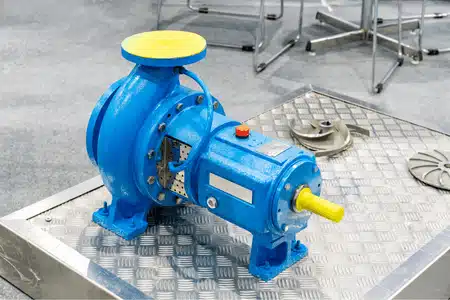
Understanding What is a Pump Volute: Insights and Applications
A pump volute is the spiral-shaped casing that wraps around the impeller in centrifugal pumps. This curved chamber collects fluid from the spinning impeller and guides it to the discharge port. The volute casing serves as both the pressure boundary and the key component that turns high-speed liquid into useful pressure for your system.
What Is a Pump Volute?
A pump volute is a spiral-shaped volute casing surrounding the impeller in centrifugal pumps. It captures fluid expelled at high velocity and gradually slows it. The casing expands toward the discharge port, optimizing flow. A double volute pump uses twin channels to balance thrust on the pump shaft and thrust bearings, reducing vibration and wear. The cutwater near the impeller guides liquid efficiently, improving pump performance at the best efficiency point across varying practices.
How Does a Pump Volute Work?
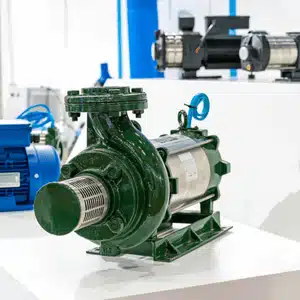 Fluid enters through the suction inlet at the center of the impeller, gaining velocity as it spins on the pump shaft. The impeller blades guide the fluid outward, increasing its speed and energy. The high-speed liquid moves into the volute casing, where the expansion slows it, turning speed to force at the discharge port. This process is called dynamic pressure conversion.
Fluid enters through the suction inlet at the center of the impeller, gaining velocity as it spins on the pump shaft. The impeller blades guide the fluid outward, increasing its speed and energy. The high-speed liquid moves into the volute casing, where the expansion slows it, turning speed to force at the discharge port. This process is called dynamic pressure conversion.
Centrifugal pumps often use materials like cast iron or stainless steel for both the impeller and volute casing. A properly installed impeller ensures efficient energy transfer and minimal wear. When ordering a replacement impeller, check the product specifications carefully. Some parts are called out by specific models or serial numbers.
Before completing checkout, review shipping options and applicable tax on the product. Confirm that the correct impeller and volute casing are selected. An accurate image helps verify the impeller type. Shipping delays can result in downtime, so choose reliable shipping services. For reference, this note is marked jun for tracking purposes.
Single vs Double Volute Design
Most smaller pumps use a single volute with one cutwater. This design works well but can create unbalanced forces when the pump operates away from its design point. At low flow conditions, pressure builds unevenly around the impeller, creating side forces that push the shaft to one side.
A double volute pump has two spiral passages offset by 180 degrees. This design splits the flow into two equal paths that balance each other out. The result is much lower radial thrust on the shaft and bearings, especially during low flow operation.
Double volute pumps show roughly 45% lower radial forces compared to single volute designs. This reduction means less vibration, longer bearing life, and smoother operation across a wider range of conditions. Larger pumps often use double volute casings to handle the higher forces involved.
Key Components Working with the Volute
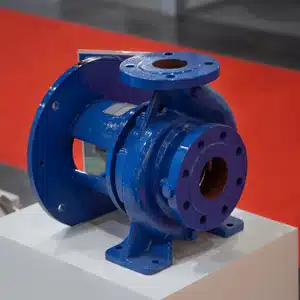
The impeller is the rotating part that adds energy to the fluid. It can be single suction (drawing from one side) or double suction (drawing from both sides for better balance).
The pump shaft connects the impeller to the motor. It must resist bending from the radial forces created by force imbalances in the volute casing.
Bearings support the shaft and absorb forces. Radial bearings handle side loads from the volute, while thrust bearings manage axial thrust along the shaft line.
The suction and discharge ports connect the pump to your piping system. The discharge port is typically tangential to the volute to maintain smooth flow.
Volute vs Diffuser Design
Some pumps use a diffuser instead of a volute casing. A diffuser has multiple stationary vanes arranged in a circle around the impeller. Each vane forms a small expanding passage that converts velocity to force.
Diffusers work well in multi-stage pumps where you need to convert energy efficiently between stages. They provide better force balance than single volute designs but are more complex to make.
Volute casings remain more common for single-stage pumps because they’re simpler to make and can handle solids better. The single large passage in a volute casing is less likely to clog than the multiple small passages in a diffuser.
Maintenance and Volute Casing Styles
Pump volute casing designs impact maintenance. Radially split pump casing lets you access the impeller without disconnecting pipes. Axially split styles allow easy access to parts in larger double suction centrifugal pumps. The volute casing design helps maintain proper velocity as fluid moves through the pump.
Volute casing material must suit the fluid. Cast iron for water, stainless for chemicals. Slurry pumps often use replaceable liners, making them compatible with abrasive content. The impeller must be correctly positioned to avoid wear on bearings and ensure efficient operation.
When ordering parts, pay attention to details like quantity, size, and material. For example, ensure the volute casing, impeller, and bearings match your system. During shipping, parts must be protected to avoid damage. If content appears damaged upon arrival, note it present in your inspection report. Check your cart before finalizing shipping to confirm all common items are included.
Applications Across Industries
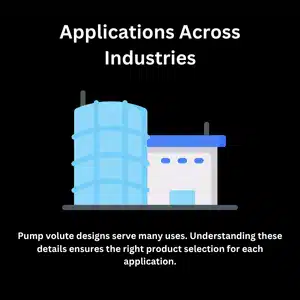
Power plants use volute pumps for cooling water. The impeller is carefully engineered to maintain consistent velocity and flow under varying load demands. HVAC systems rely on them for quicker chilled and hot water circulation, where precise details of the impeller design make a difference in energy efficiency.
Fire systems need pump volute designs to build pressure fast. Here, the impeller and volute casing work in tandem to achieve rapid response. In oil and gas, double pump setups for high-pressure pipelines often use a specialized impeller design, sometimes referred to in specifications as a “high-head” product. Understanding these details ensures the right product selection for each application.
Modern Innovations
Recent advances in manufacturing are changing how volute casings are made. 3D printing now enables pump volute designs once hard to manufacture, cutting shipping time. Modeling improves volute casing performance and reduces vibration in centrifugal pumps.
Advanced materials like duplex stainless and engineered plastics enhance pump casing durability in harsh applications. These innovations expand range and performance across industries.
Choosing the Right Volute Design
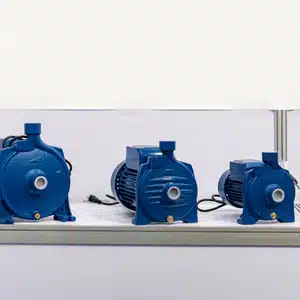
Consider your operating conditions when choosing volute materials. The casing must handle your fluid’s temperature, pressure, and chemical properties. Stainless steel volutes cost more but last longer in corrosive service.
Think about maintenance access when selecting casing styles. Radially split designs make rotor removal easier, while axially split casings provide better access to internal components.
Conclusion
The pump volute converts impeller speed into system pressure. Understanding volute casing design helps with selecting centrifugal pumps and planning check ups.
Choosing between single and double pump depends on system size and required balance. Both handle flow but differ in managing thrust and wear.
Monitor volute casing condition during checks. Damage lowers efficiency and reliability. Use quality parts to restore pump performance.
In fluid systems, the volute remains essential. Its design ensures your pump delivers consistent pressure where needed.
